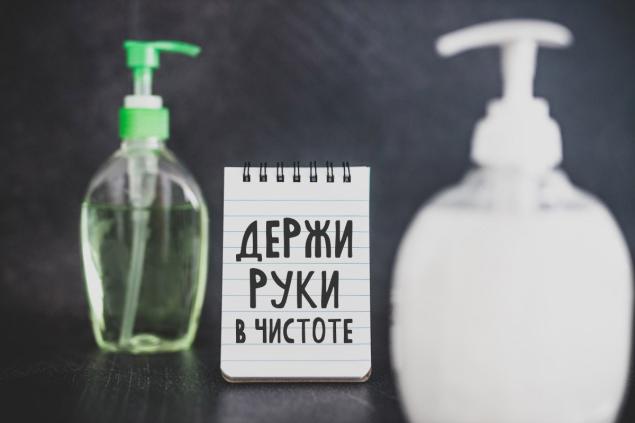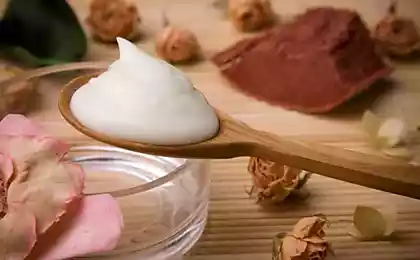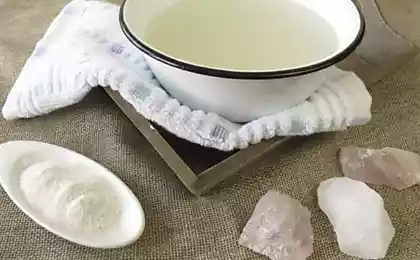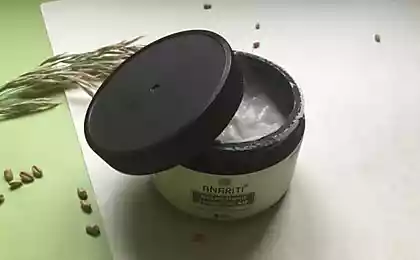167
Instructions for the manufacture of antiseptic for hands
Due to the spread of coronavirus, after medical masks, antiseptics began to disappear from stores.

It is proved that thorough hand washing and their treatment with special means can prevent the transmission of pathogenic microorganisms.

Water and soap are not always available. What to do if you stand in line in a cafe or hold on to a handrail in public transport, and in the supermarket you take a cart, the handle of which has been in a thousand hands in a day?
For those who have no time and nowhere to wash their hands, there are antibacterial gels or, as they are also called, sanitizers.

Mostly in plumbing includes ethyl or isopropyl alcohol, chlorhexidine and other antimicrobial substances. To reduce their effect on the skin, natural oils, aloe extract, vitamin E are added.

Ready-made antibacterial hand gels, which are sold in the store, do not always smell pleasant and can irritate the skin. You can prepare such a remedy with your own hands, choosing the right base and flavors to give the liquid a pleasant smell.
WHO Antiseptic Preparation Recipe
The World Health Organization has provided recommendations on how to independently make the simplest alcohol-containing gel antiseptic.
You'll need it.
Status of work
Recipe 1
Often antisepticism It can lead to skin aging because dry skin is more easily damaged and more susceptible to wrinkles. To avoid this, antiseptics add softening additives: aloe vera gel, glycerol, essential oils.
You'll need it.
Status of work
Recipe 2
Antifungal and bactericidal properties are inherent in the flowers of calendula, chamomile, sage leaves. In pharmacies you can find their tincture, and dry raw materials.
The ingredients
Preparation
Recipe 3 (no alcohol)
Essential oils of many plants have antifungal, antiseptic, tonic and wound healing properties. Therefore, with their use, it is possible to prepare an antiseptic without alcohol at all.
Earlier we told how at home from essential oils without alcohol and preservatives to make resistant, safe for the skin and surprisingly fragrant perfume.
The ingredients
Preparation
How to use antiseptic
Antiseptics are an effective tool for the prevention of infectious diseases, but you should not get too carried away with them either. After all, in addition to harmful bacteria, they destroy useful varieties of bacteria that, on the contrary, protect us. Keep your hands clean and be healthy!

It is proved that thorough hand washing and their treatment with special means can prevent the transmission of pathogenic microorganisms.

Water and soap are not always available. What to do if you stand in line in a cafe or hold on to a handrail in public transport, and in the supermarket you take a cart, the handle of which has been in a thousand hands in a day?
For those who have no time and nowhere to wash their hands, there are antibacterial gels or, as they are also called, sanitizers.

Mostly in plumbing includes ethyl or isopropyl alcohol, chlorhexidine and other antimicrobial substances. To reduce their effect on the skin, natural oils, aloe extract, vitamin E are added.

Ready-made antibacterial hand gels, which are sold in the store, do not always smell pleasant and can irritate the skin. You can prepare such a remedy with your own hands, choosing the right base and flavors to give the liquid a pleasant smell.
WHO Antiseptic Preparation Recipe

The World Health Organization has provided recommendations on how to independently make the simplest alcohol-containing gel antiseptic.
You'll need it.
- 833 ml ethyl alcohol
- 42 ml hydrogen peroxide
- 15 ml of glycerol
- 100-120 ml of sterile water
Status of work
- Mix all the ingredients.
- Keep it in an airtight container.
- For the convenience of spilling finished antiseptic in a container of smaller volume with a dispenser.
Recipe 1

Often antisepticism It can lead to skin aging because dry skin is more easily damaged and more susceptible to wrinkles. To avoid this, antiseptics add softening additives: aloe vera gel, glycerol, essential oils.
You'll need it.
- 160 ml of medical alcohol
- 80g aloe vera gel
- mixer
- essential oils
- stirrupper
- bottle
Status of work
- Prepare a clean bowl, pour medical alcohol into it.
- In the same container, add aloe vera gel - it will give the finished product a thick consistency, and also reduce the aggressive effect of pure alcohol on the skin of the hands and protect them from drying.
- Add about 10 drops of one or more essential oils. For antibacterial gel, oils that have antimicrobial properties are ideal: mint oil, cinnamon, eucalyptus, thyme, cloves, lavender, rosemary.
- Carefully mix all the ingredients with a spatula. In the end, you should get a thick homogeneous mixture without lumps.
- Take a clean plastic bottle in which you will store the product. It is best to use a container with a dispenser or narrow neck so that it is convenient to apply the gel on your hands.
- Unscrew the dispenser or lid, insert a funnel into the neck, gently pour the liquid into the bottle. All right, fragrant gel ready to use. Perhaps after some time, some of the components will settle to the bottom, in which case just shake the bottle several times.
Recipe 2

Antifungal and bactericidal properties are inherent in the flowers of calendula, chamomile, sage leaves. In pharmacies you can find their tincture, and dry raw materials.
The ingredients
- 50 ml calendula alcohol tincture
- 50 ml of sterile water
- 1 tsp aloe vera gel
- 1 tsp glycerin
- 10 drops of tea tree essential oil
- 5 drops of lavender essential oil for smell
Preparation
- Dilute the calendula tincture with water.
- Add aloe gel, glycerol and essential oils.
- Stir everything well and pour it into a dispenser jar.
Recipe 3 (no alcohol)

Essential oils of many plants have antifungal, antiseptic, tonic and wound healing properties. Therefore, with their use, it is possible to prepare an antiseptic without alcohol at all.
Earlier we told how at home from essential oils without alcohol and preservatives to make resistant, safe for the skin and surprisingly fragrant perfume.
The ingredients
- 120 ml of sterile water
- 1 tbsp aloe vera gel
- 10-12 drops of clove oil
- 10-12 drops of cinnamon oil
- 10-12 drops of eucalyptus oil
- 10-12 drops of rosemary oil
- 20 drops of lemon or orange oil for smell
Preparation
- Mix all the ingredients and pour into a spray bottle.
- Shake it up and use it.
How to use antiseptic

- Choose an antiseptic that contains at least 60-80% alcohol and at least 2% chlorhexidine.
- Alcohol and antiseptics based on it show the best results when there is no visible dirt on the hands. For example, if you washed your hands and then treated them with an antiseptic. And if the skin remains dust, earth or something greasy, the tool works much worse.
- The antiseptic should cover the entire surface of the hands, for this, an adult needs at least 3 ml of solution. Treat your hands with an antiseptic for longer than 30 seconds, otherwise dangerous germs can survive.
- In case of frequent use of antiseptic, apply a hand cream to avoid dry skin.
- Keep the antiseptic away from young children. These toxic jars are very attractive to babies.
Antiseptics are an effective tool for the prevention of infectious diseases, but you should not get too carried away with them either. After all, in addition to harmful bacteria, they destroy useful varieties of bacteria that, on the contrary, protect us. Keep your hands clean and be healthy!























